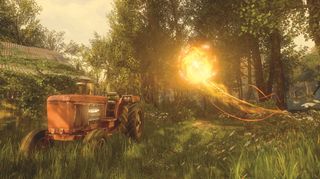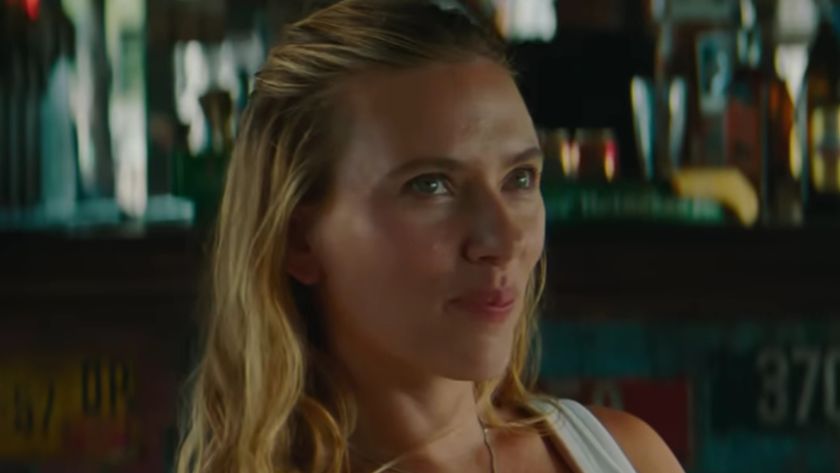Everybody's Gone to the Rapture - should you join them?
When we Brits do the apocalypse, we do it in style. We’ll have none of this exploding petrol station nonsense, nor any of that revolver-touting, sunglasses-wearing, one-liner spouting poppycock. No, sir. We take our end times with no sugar and a stiff upper lip, thank you very much.
We are, of course, talking about the particular brand of apocalyptic sci-fi that was all the rage in the ’70s and ’80s – a time when the global political situation was perilous at best, and before Hollywood zombies fully zerg-rushed the genre. Into this arena strides The Chinese Room, the Brighton-based developer working on an ambitious open-world, narrative-driven mystery. “I was reading a lot of British apocalyptic sci-fi – John Wyndham, Christopher Priest, John Christopher – and it’s such an amazing subgenre,” says Dan Pinchbeck, the game’s creative director. “I really wanted to do something where we could explore a really English kind of apocalypse and do something very different to most post-apocalyptic games out there.”

In lieu of rampaging Triffids, here the end of the world will be a lot more cerebral. Set in the rural climes of Shropshire, Rapture allows you to approach the hauntingly abandoned, breeze-kissed environment in an exploratory fashion. We’ll pick apart the mystery of what happened, both to the frankly gorgeous-looking world and to the five physically absent characters that the story revolves around, as we please. The likes of Gone Home and Dear Esther have these evidence-based revelation systems down pat, yet neither has the meat of a grander story to go with it. Rapture appears to want to scratch that itch.
“We wanted to see if we could take the minimalist, emotional, story-driven game into an open-world space, where there was a much greater degree of player freedom in terms of how the story is discovered, how the space is explored,” says Pinchbeck. “And then narratively I’m a huge fan of titles like Stalker and Metro and wanted to marry that kind of desolate atmosphere with something really character driven.”

As you navigate the world of Rapture glowing orbs of light, representing each of the characters whose stories you uncover, float ethereally about. These gently guide the player in particular directions towards facets of the world which, when interacted with, might reveal elements of that particular character’s narrative. But why England? What is it that makes Shropshire such an alluring setting?
“There’s something about the remoteness,” explains Pinchbeck, “the parochialism of rural England in the early ’80s [Rapture is set in June 1984]. It’s pre-internet, at the very beginning of mobile phones. You could be genuinely cut off from the world. And it’s a time and place where these big global events were hovering threateningly on the horizon. We were terrified of nuclear war, an AIDS pandemic, miners’ strikes, the Falklands conflict – it felt pretty apocalyptic. So it’s a natural fit for the game.”
“Plus, the remote location gives us a very tight, small community, so we can focus on the relationships between the people of Yaughton Valley and make it very personal.” It sounds almost like the setting of an Agatha Christie novel, where a group is brought together and trapped in an environment until the main character can unravel the truth of exactly what happened.
Sign up to the 12DOVE Newsletter
Weekly digests, tales from the communities you love, and more

Key to everything, claims Pinchbeck, will be pacing. “I believe emotions work at different speeds, and something like sadness needs time and space to unfold. That runs counter to the design ethos of hammering the player for a response or making everything a button press.”
We can see where he’s coming from. Compare the act of choosing your last words to a dying friend in Telltale’s The Walking Dead to Call Of Duty: Advanced Warfare’s infamous ‘Hold X to pay respects’ interaction, “which is just crass on every level” says Pinchbeck. “[It's] about understanding that a game, and the emotional experience of playing a game isn’t just about grabbing physical responses off a player, but it’s also about the stuff that happens inside their head and heart that’s inspired by the game but not reducible to button pressing. If you want a properly emotionally complex and dense experience, you need to back off as a designer and let the player just hang sometimes.”
With creative hands so keenly aware of how storytelling is evolving in games, and a world that feels so ripe for exploration, it’s looking like 1980s Shropshire could emerge as a surprising prime hangout come 2015.













Former Pokemon world champ uses a "stupid strategy" that "should never work" to transform a Lapras into an OHKO machine so powerful it can even take out enemies in alternate dimensions

Minecraft Pocket Edition got its name because one of its devs was a big "Nintendo nerd" who wanted to pay homage to the Game Boy Pocket





